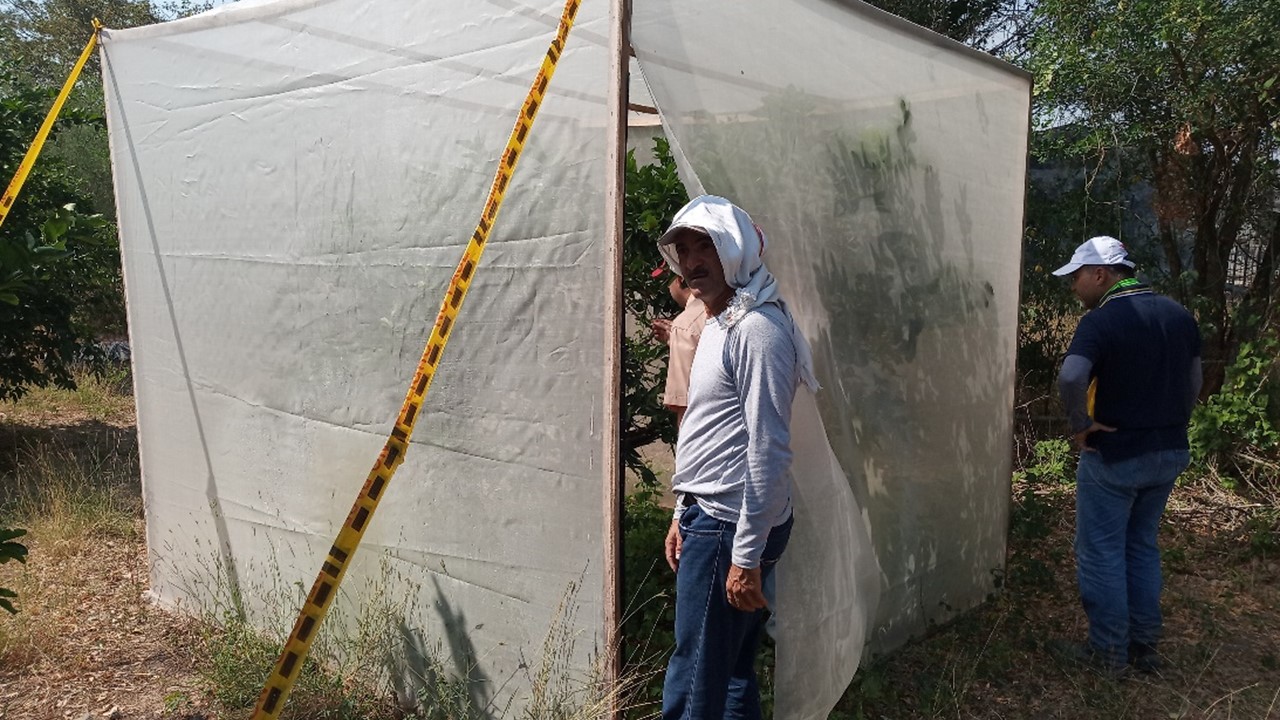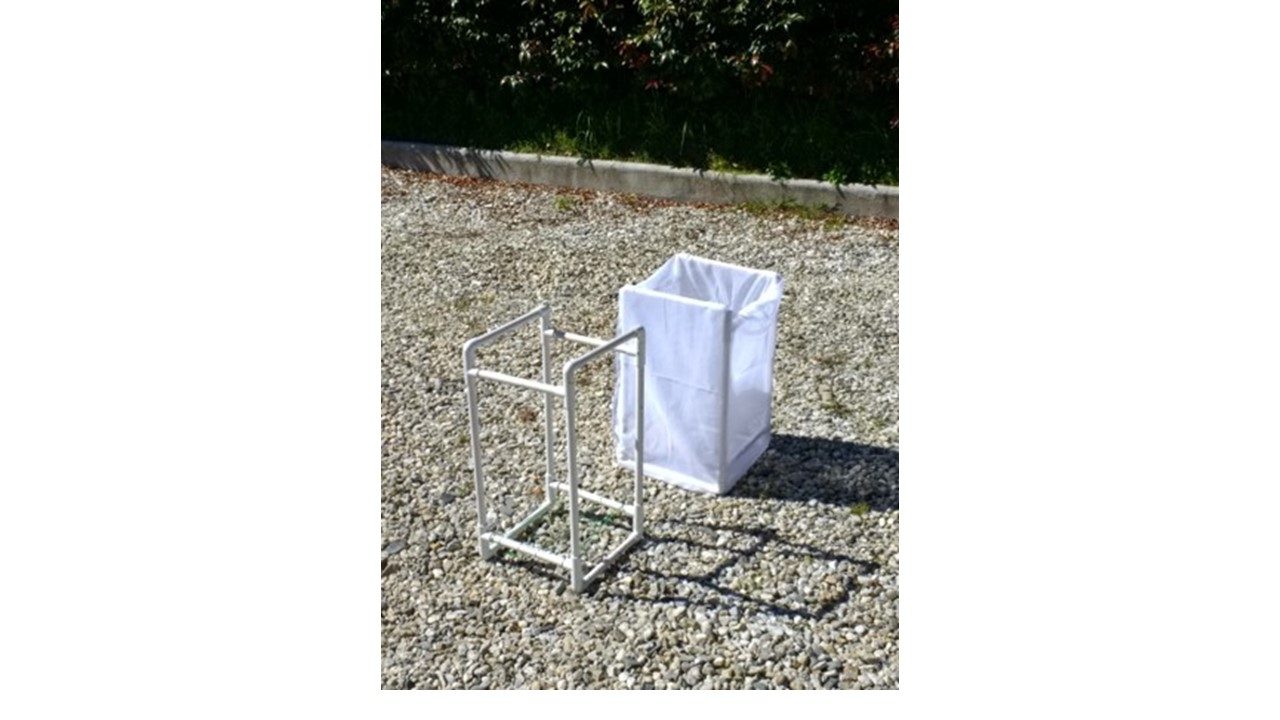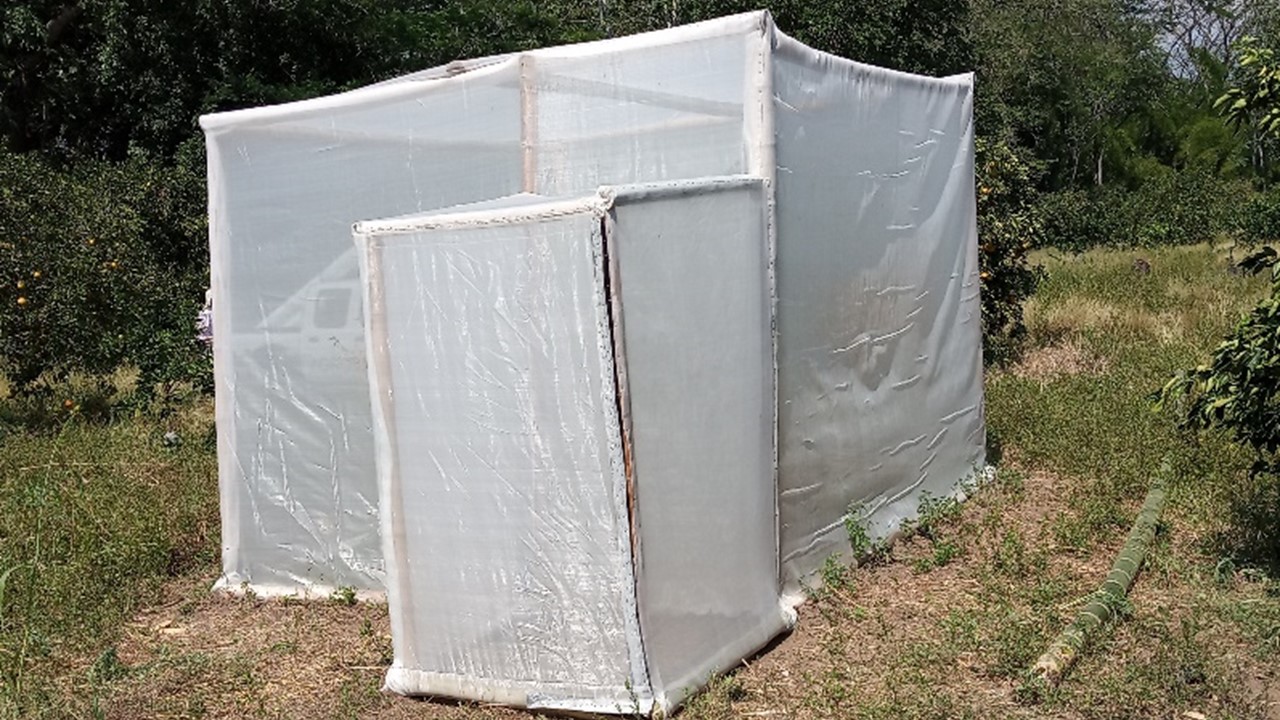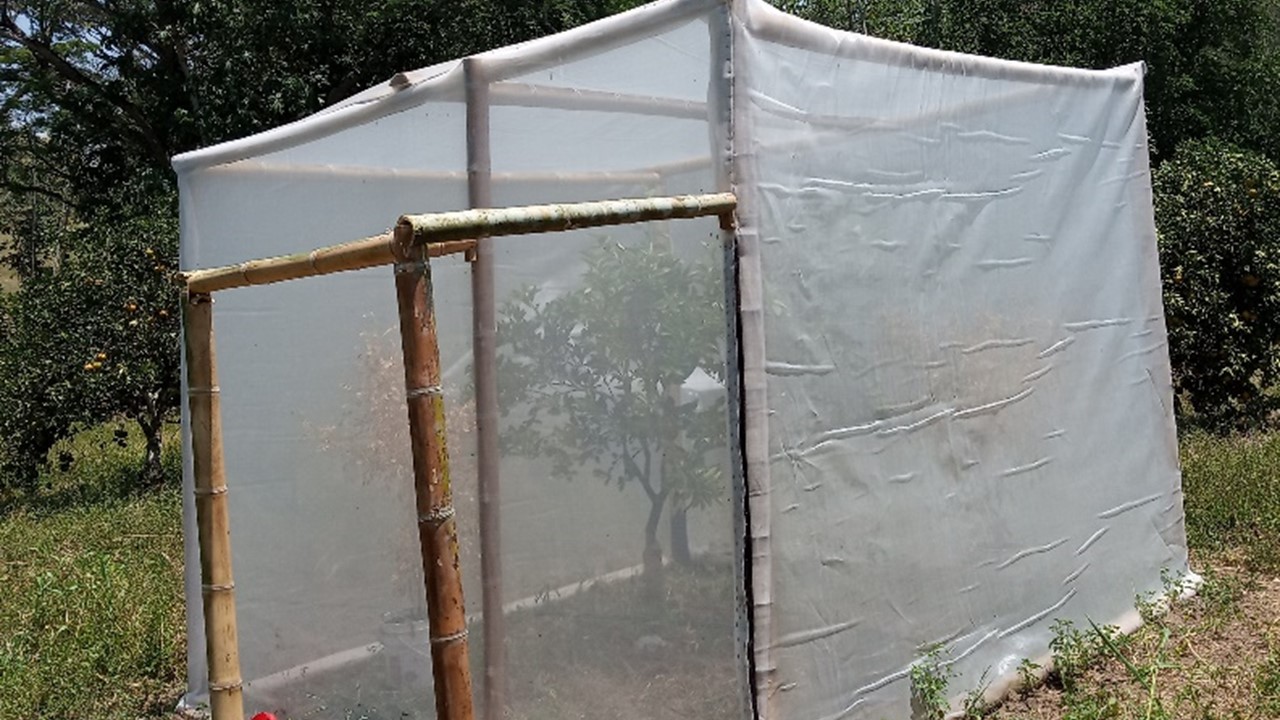Access routes and use of the parasitoid Tamarixia radiata
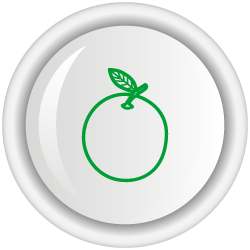
- Thematic area:
- Integrated management of the productive system
- Productive system:
- Citrus
- Geographic coverage:
-
Andean, Amazon and Orinoco regions
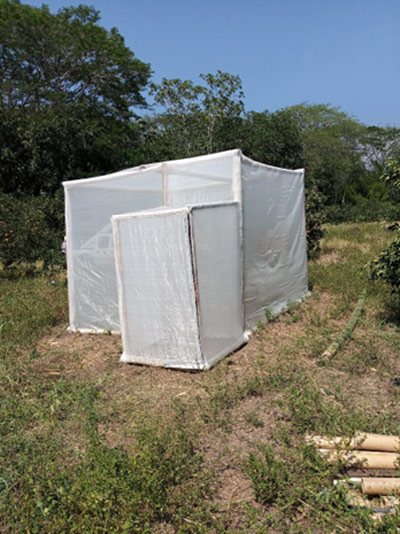
Description
This technological recommendation has different access routes to Tamarixia radiata available to citrus producers to control the HLB vector: 1) in situ increase, 2) backyards, and 3) reservoirs.
These routes have the purpose of facilitating the conservation, increase, and use of population-regulating agents of different pests in citrus cultivation, facilitating, among others:
1) Access to this parasitoid according to the host's characteristics.
2) The links involved in the citrus production chain in Colombia.
These routes are encouraged and correlated with the production, sustainment, and use of the pilot plant (PLANETar) at the La Selva Research Center in Rionegro, Antioquia.
It is important to keep in mind that the PLANETar pilot plant has the purpose of generating the bioinput under hermetic and controlled conditions and harmoniously with the components of the pathosystem (host-Rutaceae-, host-Diaphorina citri-, Parasitoid-Tamarixia radiata), focused on the management of host populations. In this way, it is possible to prevent the spread of the HLB disease of citrus, through the maintenance and conservation of HLB-free areas and the delivery of the parasitoid to the chain actors involved.
The different access routes to the T. radiata parasitoid are described below:
1. In situ increase: It is implemented in commercial citrus trees or alternate hosts and in ornamental shrubs where adequate conditions can be offered for this activity. The in situ increase of beneficials can be of predators or parasitoids, and this activity can be carried out in a live fence such as swinglea or in myrtle individuals that, infested or about to be infested with D. citri, must be isolated and placed under hermetic conditions in a proportional insulation structure. This structure, according to its dimensions, can be built in PVC pipe; in wooden slats, preferably immunized, especially in the fraction that comes into contact with the ground; in guadua (Bambusaceae), with the same immunization, or even in metal profiles, depending on interest, availability of resources and intended duration.
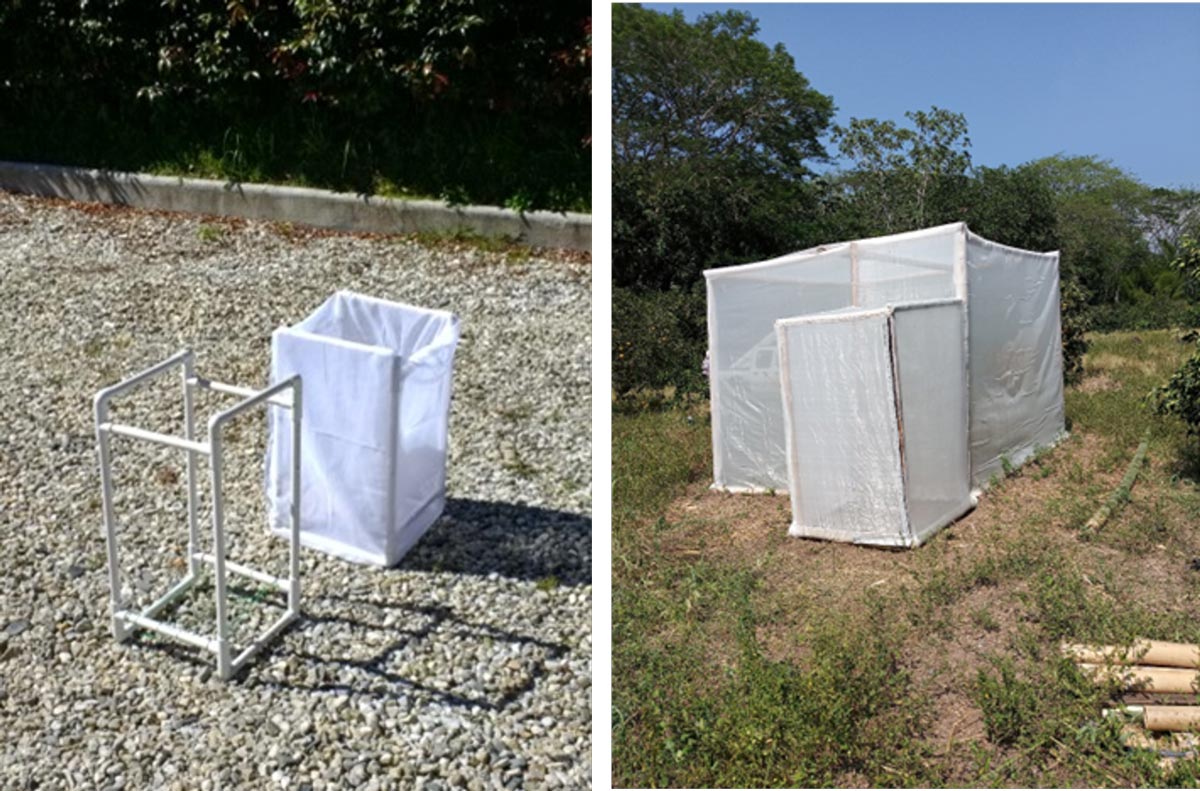
Figure 1. Devices for increasing beneficial insects. a. PVC insulation structure; b. Finished device for isolation of a citrus tree focus of Diaphorina citri.
Once the structure, according to Figure 1, is suitable, it must be covered in a transparent mesh (preferably in anti-thrips Mesh 50, crystal color, Swiss veil or organza) and, depending on the environmental offer, in an open field or under a large tree as shade. According to its size, the tree or shrub will be pruned to stimulate shoot emission and is infested by D. citri or infested from adults; this is carried out to know the age of the new individuals from eggs.
Fifteen days from the release of the shoots infested with D. citri, according to availability in the area of interest and the level of knowledge of the state of development of the T. radiata mummy, these individuals can be transferred to the isolated unit, which will constitute the breeding stock of the parasitoid. Once the parasitism process is triggered, there will be biological material to strengthen the presence of the parasitoid, both in the crop and backyard areas, without insecticide exposure.
It is important to note that the in situ increase unit must have constant and adequate maintenance to avoid the spread of sprouts that may come into contact with the anti-thrips mesh, which can eventually raise the relative humidity and cause the proliferation of sooty mold among the existing arthropods, saturation due to humidity and honeydew (sucking insects). Whiteflies and aphids should be managed as these can unbalance the entire process.
2. Backyards: In an HLB-free area, a Rutaceae plant arrangement can be established, or a spontaneous plant arrangement that eventually has citrus or myrtle for ornamental, medicinal, commercial, or daily consumption purposes can be used. In the case of myrtle (Orange Jasmine - Murraya paniculata), its conditioning is proposed with the establishment of a device or increase unit, such as the one referenced and described in the previous item, Figure 1A (PVC insulation structure). If the conditions warrant it, the bush can be planted in a pot to isolate it, and, additionally, with the bush infested by D. citri, it must be isolated with an anti-thrips mesh, which is supported on the structure referred to in Figure 1A. It is important to ensure the presence of the parasitoid, or it is transferred from a place identified with its presence. From day 10 after carrying out this practice, the parasitoid is dispersed to nearby hosts, ideally towards citrus orchards, opening the device and preventing the escape of D. citri adults.
Backyards can be synchronized through surrounding ARCOs to make concerted releases of the parasitoid T. radiata, given the permanent sprouting and presence of immature stages of D. citri, through flood releases for pest management in areas with and without HLB. This category may include the agronomic management carried out on swinglea live fences in condominiums.
3. Reservoir: It consists of spontaneously established areas without commercial interest, with a significant mass of D. citri hosts. It corresponds to plants of the Rutaceae family and even spontaneous plants of citrus fruit trees, or myrtle, as well as swinglea that, since they do not have an owner, are in common areas of the forest where D. citri may eventually be present, with or without its parasitoid, and where its presence can be stimulated through controlled release. Their management can be strategic to guarantee HLB-free zones (-HLB), and they can become a bastion of sporadic maintenance of the parasitoid, conditioned to the characteristics of the biomes in which commercial citrus orchards are located.
Considering the previous premises, the increase in beneficial insects, with emphasis on T. radiata, can be carried out through these three routes that have a non-commercial interest approach, an interest in the protection of the environment and keeping pests at low population levels, while citrus HLB disease is not present.
The use of this technology is recommended for the departments of Antioquia, Caldas, Boyacá, Cundinamarca, Huila, Norte de Santander, Quindío, Risaralda, Santander, Tolima, Meta, Cauca, Nariño and Valle del Cauca.
Audiovisual content
Parasitación para el control de HLB - La finca de hoy.
Aguacate Hass - HLB en cítricos
Associated publications
- Foldable: Incremento local de insectos benéficos para el cultivo de cítricos.
- Book: Métodos de detección de HLB y de monitoreo y control biológico del vector Diaphorina citri en cultivos de cítricos en el Tolima. AGROSAVIA, YUMA.
Image gallery
